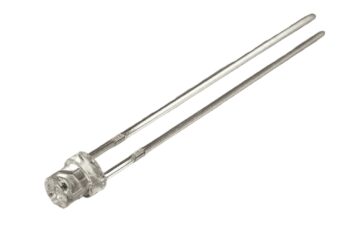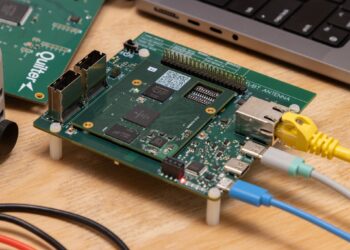By Nick Dutton, Senior Director of Product Marketing at Atmosic Technologies
The use of smart home devices has dramatically increased in recent years. Consumers have turned to the latest wireless devices to increase productivity, provide entertainment, and stay safe. But what’s often overlooked is how smart home devices can boost sustainability in the home and how cutting-edge technology continues to make these devices even more environmentally friendly.
The Smart Home Meets Sustainability
Electricity costs have been top-of-mind for homeowners for some time; energy bills have risen in response to numerous geopolitical developments or due to the increasing global demand for electricity, which was up 6% in 2021 alone. The increase in energy demand is a major contributor to the climate crisis since fossil fuels remain the largest source of energy. While there are many things that corporations are doing to step up and help address climate change, the challenge also lies in the hands of the individual.
One obvious way that individuals can make a difference is by adopting change in their own lifestyle that reduces their electricity usage; this however can be easy for some, yet incredibly difficult for others. IoT (and smart devices) can do things to better optimize electricity use with the consumer changing very little if indeed anything in their daily lifestyle. Thanks to artificial intelligence and machine learning (AI/ML), thermostats have become ‘smart’ and have become better at anticipating users’ heating and cooling preferences through their usage patterns. Users now enjoy an ideal temperature whenever they are home, plus thermostats automatically make sure that the heating and cooling systems are turned off or adjusted when they are not, saving money and energy.
Lighting has also become smart – smart lighting systems enable users to set lighting preferences based on location and time of day. These lights can use sensors to detect whether individuals are home and turn off lights when they are not. These systems can even introduce subtle randomization that provides an appearance of people being home even when they are not – simply by moving the time at which they turn off the lights a few minutes over that of the previous day. With such control, when used together with modern and efficient LED light bulbs, as opposed to the older incandescent light bulbs, an order of magnitude can be met in energy reduction. This reduction in energy use and the growth in electronic goods has driven unions, countries, and states to introduce regulations, such as California’s Title 20, aimed at driving the adoption of greater efficiency and reducing the burden on dirty, aging, or limited utility infrastructure.
Taking the Next Step: Energy Harvesting
With this said, it’s also important to think about how our smart devices will impact the environment, even at the end of their useful lifetime. Today, billions of batteries are being used to power smart devices, and as these batteries deplete many are simply thrown into landfills. Throwing away batteries, unfortunately, results in harmful chemicals and rare metals leaching into the ground. The good news is that energy harvesting technology offers a way to sustainably power connected devices and help solve the battery problem.
For many IoT devices, energy harvesting technology – when combined with various other features – significantly extends the battery life of smart devices. These technologies enable a smart device’s battery to last the entire lifetime of the product so that users don’t ever need to worry about changing the batteries in their TV remote or keyboard. In some cases, these technologies can even remove the need for batteries altogether, bringing us one step closer to a battery-free IoT.
In addition to the environmental benefits of not having to dispose of batteries, there’s a huge convenience factor, and the cost savings can add up too. While these benefits are great for individuals, they are magnified further for industrial and enterprise IoT deployments that might use thousands of IoT devices in a single building. Consider the electronic shelf label (ESL), a technology seen in more and more retail establishments. Since they are all installed at the same time, their batteries will likely deplete at a similar time. Changing an entire store’s ESL batteries at the same time could prove to be extremely costly in both time and ‘dollars’, but using harvested energy from the stores’ lighting system could reduce that cost and maintenance time, or even remove it altogether.
The Different Types of Energy Harvesting Sources
So, what energy sources can be harvested to power smart home devices? Energy harvesting sources include photovoltaic (PV, light), radio frequency (RF), mechanical motion, and thermal. PV is the most popular method today, especially for the human interface device such as a keyboard or a mouse. One huge benefit of PV is that you don’t need that much light to power a device. PV cells can often harvest enough energy to power a connected device with the minimal amounts of light that may be attainable indoors. Light doesn’t even need to be ‘visible’ as PV can also source energy from infrared light sources. Also, new developments in PV technology mean that the traditional glass PV panel is no longer a constraint because PV can now be molded and integrated into a wider variety of form factors or applications, meaning the traditional square panel people associate with the ‘solar panel’ calculator is no longer a requirement – PV panels can be fully integrated into the look and feel of a product without users realizing they are there.
RF energy can also be used as a source, allowing transmitters to power other nearby devices. Power can be transferred using any frequency, but lower frequencies such as the common ISM license-free 900MHz band can be used to power IoT devices up to even five or six meters away from the RF source which could also be used to power multiple devices at once.
Smart devices can also harvest energy from mechanical motion. While this isn’t yet widely used in smart homes today, is a great choice for industrial settings such as factories where energy can be harvested from the actuating motion of a button press or the vibration of a motor.
In the coming years, we will likely see innovation that drives the concept behind ‘smart clothing’ which uses thermal energy, such as body heat, to power connected sensors or in running shoes where the pressure and flex from a runner’s soles is used to power smart fitness trackers.
The bottom line is that climate change is here, which will require a multi-faceted approach to address it. The good news is that it isn’t that difficult at an individual level to address by using smart devices that employ energy harvesting to minimize battery use which helps us all reduce environmental impact.










